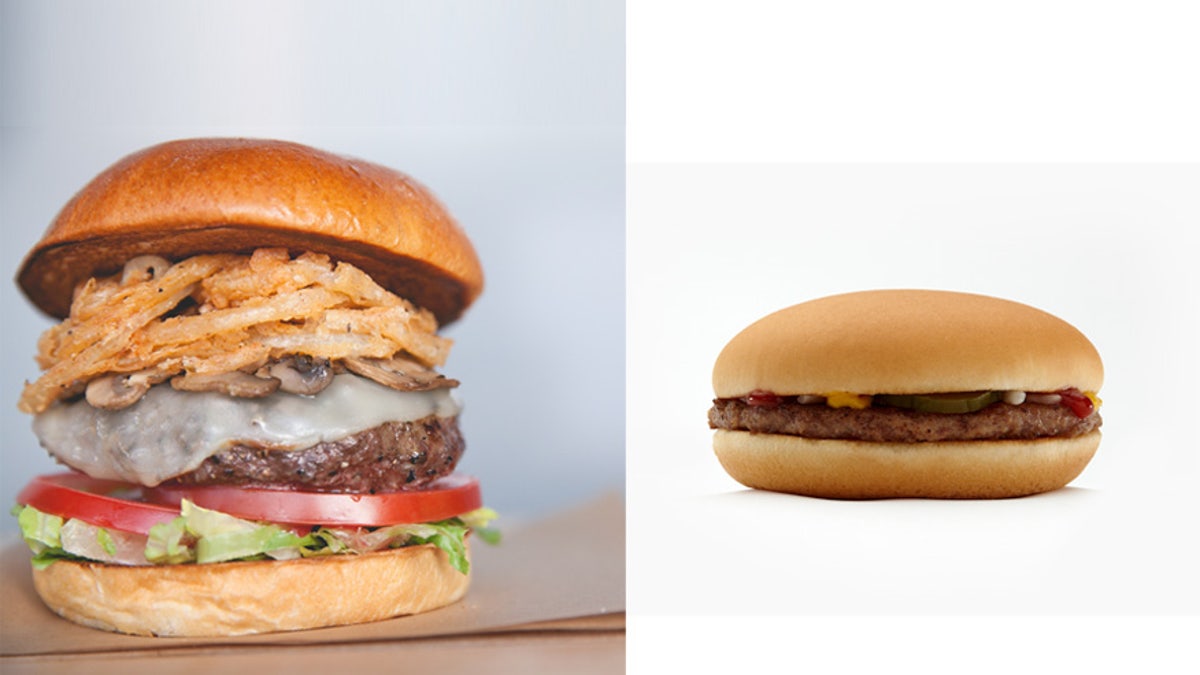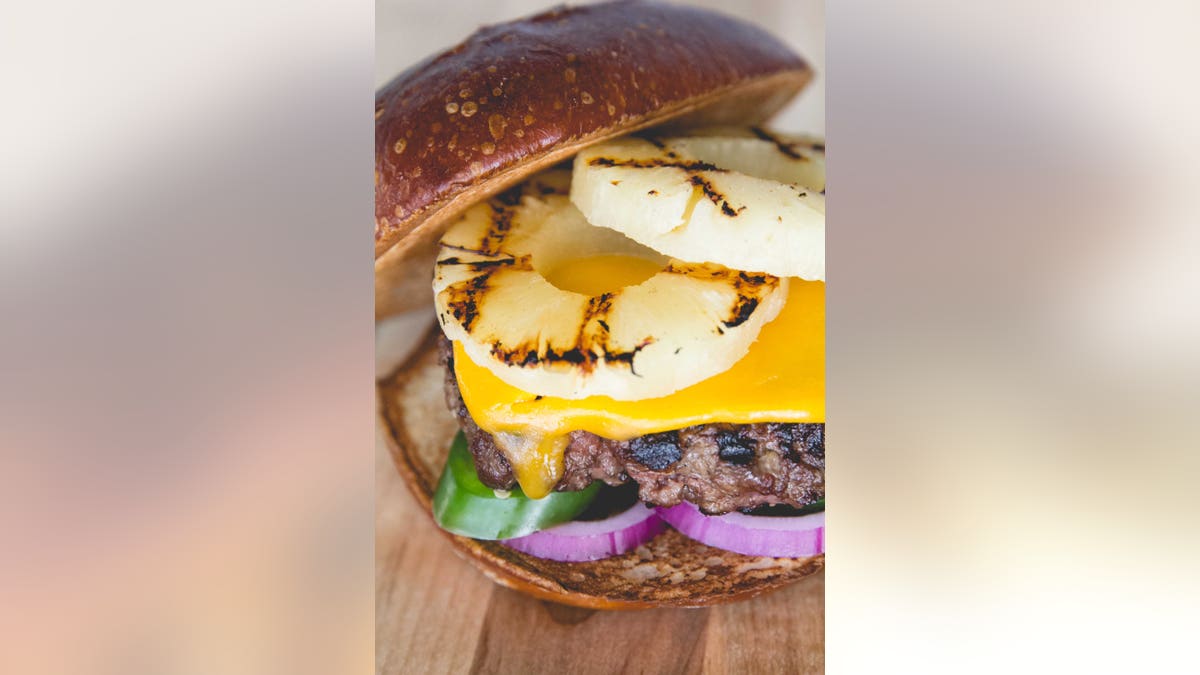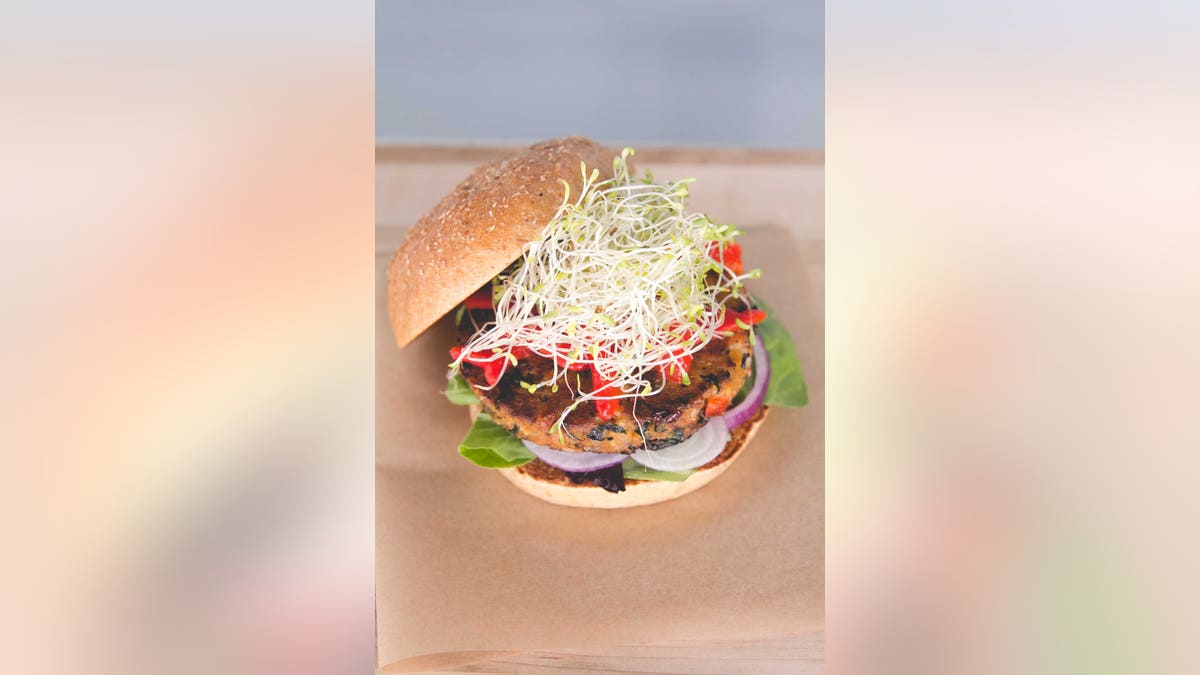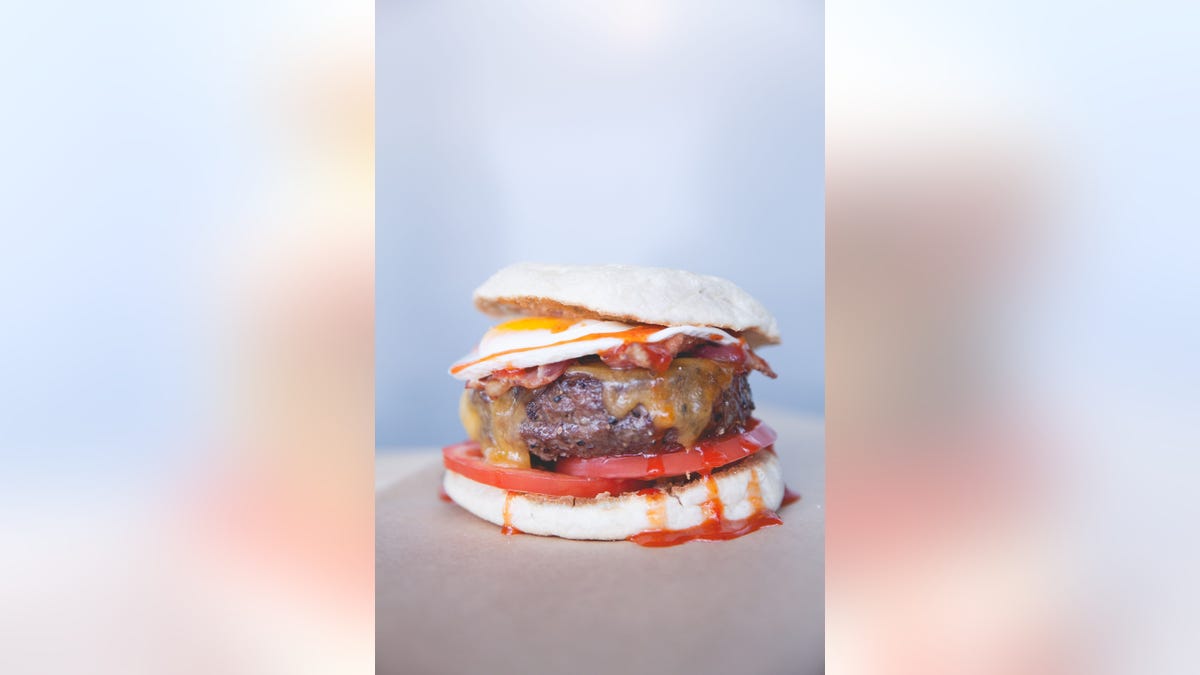
Premium or classic fast food: Which burger do you prefer? (The Counter/McDonald's)
Consumers are opening their wallets wider, forgoing Big Macs and Whoppers for the pricier patties and customizable burgers they find at upscale burger joints.
McDonald’s U.S. sales declined 3.7 percent in August, its worst decline in more than a decade, caused globally by food-safety issues and sagging sales in China, but also including a 2.8 percent drop in the U.S. That’s the company’s fourth straight month of decline in its home market, which has seen a big shift in the past few years.
This sales slump follows a Consumer Reports survey that placed McDonald’s last in taste among its readers – well behind “better burgers” from the likes of Five Guys Burgers and Fries, The Habit Burger Grill and Smashburger.
So why are people happy to pay more for the quintessential American meal?
“Some consumers are not willing to trade all the way down to traditional fast food,” says Elizabeth Friend, a Los Angeles-based senior food service analyst at Euromonitor International.
“We have a strong cultural tradition of going out for a burger and fries. These (better burger) chains have given customers newer, better and more interesting way to do things they’ve always done. That’s why I think we’ve seen such great growth in fast casual and better burgers.”

(The Counter)
What qualifies a restaurant as a better burger or upscale casual chain? The answer may remind you of something else that’s hard to pin down. “You know it when you see it, but it’s not that easy to define,” Friend quips, before adding, “It’s a burger chain that tries to market itself on the quality of actual ingredients. There’s a bigger focus on higher quality beef, fresher ingredients and sourcing locally.
“This sets apart a fast casual chain. The focus is on the whole dining experience, some blend of counter service and table service.”
The most successful better burger chains are ringing up impressive gains. Five Guys recorded sales of $1.24 billion in 2013, up sharply from just $51.3 million a decade ago when this trend began to catch hold, according to data provided exclusively to FoxNews.com by Euromonitor International.
The Euromonitor data show chained burger fast food revenue growing every year since at least 1999, from $42.9 billion to $70.9 billion in 2013. The firm predicts the market will top $80 billion before 2019.
Within this market, the category of fast casual burger restaurants is forecast to jump from $19.4 billion last year to $29.8 billion by 2019.
At the vanguard of the better burger trend and riding the wave to global expansion is The Counter, based in Culver City, Calif. Company founder Jeff Weinstein says he started The Counter to restore the hamburger to its place as an upscale entrée.

Sprouts top a veggie burger. (The Counter)
“I felt people had turned the burger into a snack,” he said. “We weren’t going to play to the lowest common denominator.”
The Counter has thrived by feeding into the affordable luxury mentality that has gripped Americans since the recent recession. Restaurant officials say average customer checks run about $15-$16, a cut above many of its rivals. Weinstein says his restaurant attracts consumers trading down from places like Ruth’s Chris Steak House as much as those trading up from McDonald’s and Burger King.
Analysts say The Counter’s higher price point makes it harder to classify than other better burger joints, and Weinstein bristles at the comparisons: “Comparing us to Five Guys is like comparing Apple to LeapFrog,” he says, referring to the children’s electronics company.
The Counter has made its name on its ability to offer patrons more than a million combinations to customize a burger, which Friend says is the chain’s secret sauce for success.
“Customization has been a big trend across all restaurant categories, and customers are responding to that,” she says. “You see it at Chipotle, and The Counter does that that especially well. They take it to the extreme, and it’s a key defining trait that sets them apart a little bit.”
Weinstein says customizing burgers and other menu offerings allows customers to truly have it their way: “You get exactly what you want here and you can’t do that anywhere else. We can accommodate anybody – vegetarians, vegans. There’s a burger for every diet.”

(The Counter)
Since its 2003 opening in Santa Monica, Calif., The Counter has expanded to nine states, stretching from Honolulu to Times Square, as well as Ireland, Saudi Arabia and the United Arab Emirates. Company officials say projected openings for the rest of the year include New Brunswick, N.J, Palm Beach Garden, Fla., Riyadh, Saudi Arabia, and San Francisco, with expansion into Malaysia, Russia and Mexico in the works.
To feed the growing hunger for burgers, The Counter has introduced a smaller concept called Built, which operates on a smaller footprint (roughly 1/5 the size of its big brother) in places like college campuses and airports. And the company literally caters to clientele by bringing its bespoke Burger Bar to events.
While The Counter would not divulge its financials, Weinstein’s longtime business partner and co-owner, Craig Albert, says, “Our sales are up significantly over last year, a significant percentage, and have been every year since we’ve been in business.”
The burgeoning better burger trend has investors pondering when better burger initial public offerings will be served. Shake Shack, started by Danny Meyer, is reported to be preparing for an IPO that could value it as much as $1 billion.
Albert downplays an IPO by The Counter; “We’re buyers, investors, we want to invest in our business and open stores and keep growing. We’re not sellers.”
Albert says McDonald’s “is too smart” not to turn around flagging sales. And in fact, the fast food giant has taken a leaf out of the customization playbook, testing what it calls “The Build Your Burger” premium burger experience at four locations in and around San Diego. It features made-to-order grilling and 22 toppings that customers can order on touchscreen tablets. McDonald’s officials say it’s too soon to say if the concept will be rolled out nationally.
But customization clearly is working for The Counter and other better burger restaurants – as well as Chipotle, which McDonald’s owned and then spun off into a separate public company.
It seems to be a simple recipe for fulfilling America’s insatiable appetite for its staple meal. “Burgers are the one thing we can’t get enough of,” Friend says. “We may change where we go for burgers or how much we pay for them, but I don’t think that’s going to change anytime soon.”
